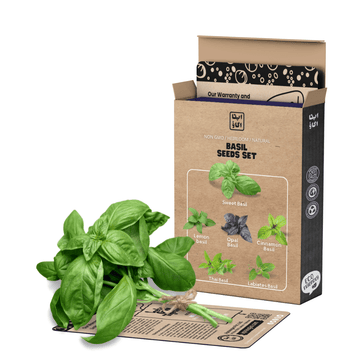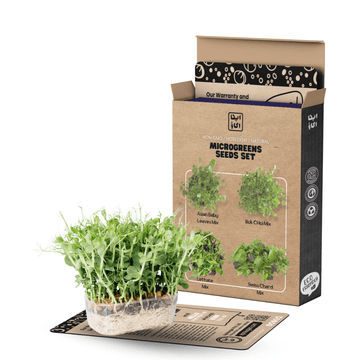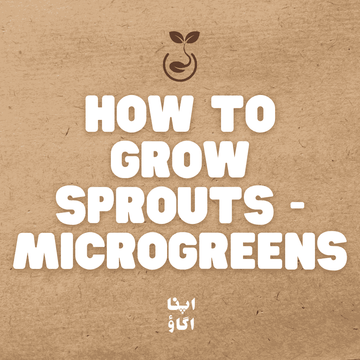The mint family is a rich, aromatic group of herbs that have delighted humans for centuries with their refreshing flavors, soothing aromas, and medicinal qualities. While the term "mint" generally refers to plants in the Mentha genus, several other plants like marjoram are often included in discussions due to similar uses and appearance.
Below is a guide to the most commonly known mint varieties, along with their scientific classifications, common names, and culinary and medicinal uses.
1. Peppermint (Mentha × piperita)
-
Common Names: Peppermint, English Mint
-
Botanical Name: Mentha × piperita
-
Family: Lamiaceae
-
Pollination Type: Sterile hybrid (cross of spearmint and watermint)
-
Flowering Habit: Purple flowers, blooms mid to late summer
🔍 Key Traits:
-
Very high menthol content (35–45%)
-
Fresh, sharp, and cool flavor
-
Used in teas, candies, gums, and medicinal balms
-
Excellent for digestion, headache relief, and nasal congestion
2. Spearmint (Mentha spicata)
-
Common Names: Spearmint, Garden Mint, Common Mint
-
Botanical Name: Mentha spicata
-
Family: Lamiaceae
-
Pollination Type: Open-pollinated
-
Flowering Habit: Spikes of lavender-white flowers
🔍 Key Traits:
-
Lower menthol content (0.5–1%)
-
Sweeter, milder flavor than peppermint
-
Commonly used in cooking, mint sauces, drinks, and chewing gum
-
Traditionally used for nausea and digestive relief
3. Apple Mint (Mentha suaveolens)
-
Common Names: Apple Mint, Woolly Mint
-
Botanical Name: Mentha suaveolens
-
Family: Lamiaceae
-
Pollination Type: Open-pollinated
-
Flowering Habit: Pale pink to white blooms, fuzzy leaves
🔍 Key Traits:
-
Mild, fruity mint flavor reminiscent of green apples
-
Ideal for fresh salads, herbal teas, garnishing, and desserts
-
Grows vigorously and forms dense ground covers
-
Good for infusions and ornamental borders
4. Wild Mint (Mentha arvensis)
-
Common Names: Wild Mint, Corn Mint, Japanese Mint, White Mint
-
Botanical Name: Mentha arvensis
-
Family: Lamiaceae
-
Pollination Type: Open-pollinated
-
Flowering Habit: Small purple flowers along leaf axils
🔍 Key Traits:
-
Very high menthol content (up to 80%)
-
Strong, cooling, and medicinal scent
-
Used industrially in menthol extraction, balms, and oils
-
Traditionally used in herbal medicine for fevers, colds, and digestive ailments
5. Chocolate Mint (Mentha × piperita 'Chocolate')
-
Common Names: Chocolate Mint
-
Botanical Name: Mentha × piperita 'Chocolate'
-
Family: Lamiaceae
-
Pollination Type: Sterile hybrid
-
Flowering Habit: Purple flowers, dark stems
🔍 Key Traits:
-
Subtle chocolatey undertone combined with mint
-
Popular in desserts, teas, and herbal infusions
-
Fragrant ornamental variety loved by gardeners
6. Ginger Mint (Mentha × gracilis)
-
Common Names: Ginger Mint, Scotch Mint
-
Botanical Name: Mentha × gracilis
-
Family: Lamiaceae
-
Pollination Type: Hybrid (spearmint × cornmint)
-
Flowering Habit: Light purple to lavender flowers
🔍 Key Traits:
-
Spicy, ginger-like mint flavor
-
Attractive variegated foliage
-
Used in tea blends, garnishing, and aromatic oils
7. Water Mint (Mentha aquatica)
-
Common Names: Water Mint
-
Botanical Name: Mentha aquatica
-
Family: Lamiaceae
-
Pollination Type: Open-pollinated
-
Flowering Habit: Rounded clusters of lilac flowers
🔍 Key Traits:
-
Native to wetlands, grows near streams and ponds
-
Ancestral parent of peppermint
-
Used in traditional medicine and essential oils
❌ 8. False Mints (Not True Mentha Genus)
Marjoram (Origanum majorana)
-
Common Names: Sweet Marjoram
-
Botanical Name: Origanum majorana
-
Family: Lamiaceae (Not Mentha)
-
Uses: Culinary herb for soups, stews, and herbal remedies
-
Flavor: Warm, woodsy, slightly minty — often confused with mint due to aroma
Oregano (Origanum vulgare)
-
Common Names: Oregano, Wild Marjoram
-
Botanical Name: Origanum vulgare
-
Family: Lamiaceae
-
Uses: Popular culinary herb in Italian and Mediterranean cuisine
-
Flavor: Spicy, robust, and slightly minty
📝 Note: Marjoram and oregano belong to the same family as mint (Lamiaceae) but are not true Mentha species.
Botanical Differences & Usage Overview
| Common Name | Botanical Name | Flavor Profile | Menthol Content | Primary Use |
|---|---|---|---|---|
| Peppermint | Mentha × piperita | Sharp, cool, strong | High (35–45%) | Gum, balm, aromatherapy |
| Spearmint | Mentha spicata | Mild, sweet, smooth | Low (<1%) | Culinary, teas, sauces |
| Apple Mint | Mentha suaveolens | Fruity, gentle | Low | Garnish, salad, infusions |
| Wild Mint | Mentha arvensis | Strong, medicinal | Very high (70–80%) | Medicinal oils, cooling balm |
| Chocolate Mint | Mentha × piperita 'Chocolate' | Mint with chocolate notes | Moderate | Desserts, drinks |
| Ginger Mint | Mentha × gracilis | Spicy, warm | Moderate | Herbal teas, decoration |
| Water Mint | Mentha aquatica | Fresh, earthy | Moderate | Essential oil, hybrid parent |
| Marjoram | Origanum majorana | Warm, slightly minty | None (non-Mentha) | Culinary, digestive remedy |
| Oregano | Origanum vulgare | Pungent, spicy | None (non-Mentha) | Cooking, herbal medicine |
Environmental Requirements Table
| Common Name | Minimum Temp (°C) | Maximum Temp (°C) | Preferred Humidity |
|---|---|---|---|
| Peppermint | 10°C | 30°C | 60–80% RH |
| Spearmint | 7°C | 28°C | 50–70% RH |
| Apple Mint | 10°C | 30°C | 50–80% RH |
| Wild Mint | 5°C | 35°C | 60–85% RH |
| Chocolate Mint | 10°C | 28°C | 55–75% RH |
| Ginger Mint | 10°C | 32°C | 60–80% RH |
| Water Mint | 5°C | 28°C | 70–90% RH (moist soils) |
| Marjoram | 12°C | 30°C | 40–60% RH |
| Oregano | 10°C | 35°C | 30–50% RH |
Most mint varieties thrive in moderate temperatures, partial sun, and moist but well-drained soil. Wild and water mints tolerate higher humidity, while marjoram and oregano prefer drier air and warmer climates.
Final Thoughts
The mint family offers a delightful range of flavors and functions. Whether you prefer the cooling strength of Mentha arvensis, the sweet smoothness of spearmint, or the culinary versatility of marjoram, there’s a mint (or mint cousin) for every garden and every palate.
BUY ALL MINT PLANTS SEEDS HERE >









